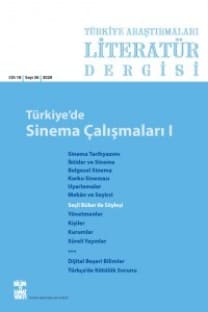F›k›h Tarihi: Osmanl› Hukuk Düflüncesinde Modern Yorumlar ‹çin Yeni Bir Referans Çerçevesi
Bu yazı, 1908 devriminin ardından Osmanlı muhitinde İslam hukuku etrafında odaklanan tartışmalarda “fıkıh tarihi”nin yeni bir disiplin olarak eğitim müfredatında yer alması ve aynı dönemde yoğunlaşan yeni ictihad yorumlarında bir referans çerçevesi olarak yeniden formüle edilmesini konu edinmektedir. Bu çerçevede, fıkıh tarihinin bir ders olarak yükseköğretim programına konulmasının bu yeni disiplini kitap düzeyinde ele alan bir telifatın oluşumundaki rölü, fıkıh tarihi üzerine yazılmış metinler ve fıkıh tarihinin bu dönemdeki algılanış biçimi konusunda önemli ipuçları taşıyan fıkıh tarihi dönemlendirmesi ile ilgili farklı görüşler incelenmiştir. Ayrıca, bu alandaki telifatta Osmanlı ve diğer İslam coğrafyalarındaki eşzamanlı ilk metinler arasındaki geçişlere de işaret edilmiştir. Konuyla ilgili müstakil metinlerden hareketle yapılan bu çalışma, Meşrutiyet dönemi Osmanlı düşüncesinde, fıkıh tarihi disiplinine farklı yaklaşımları üç grupta tasnif etmektedir: 1. Klasik usûl-i fıkıh eserlerini örnek alan ya da onlardan hareketle yazılan fıkıh usûlü ders kitaplarında fıkıh ya da usûl-i fıkıh tarihine ilişkin müstakil bir bölüm bulunmamaktadır. 2. II. Meşrutiyet sonrasında yazılan bazı usûl kitaplarında fıkıh ve usûl-i fıkıhla ilgili tarihî malumata, literatüre, mezheblere değinen, ancak bunu yaparken, tarihî malumatı yorumsuz aktaran bir yaklaşım söz konusudur. 3. Fıkıh tarihini, ihtiyaç duyulan yeni ictihadlar için referans olarak görme eğilimindeki üçüncü yaklaşım, tarihî malumatı yeni bir tasnif ve dönemlendirme içinde sunan ve muhtevadan çok bu dönemlere atfedilen özellikleri ön plana çıkartan bir özellik sergilemektedir.
This article examines the debates over the Islamic law in the Ottoman land after the 1908 revolution, focusing on the introduction of the “history of fiqh” into educational curricula and its reformulation as the new framework for modern(ist) interpretations of ictihad. In this context, I analyze the impact of its introduction into higher education on the emergence of a new literature on this new discipline as well as those texts on the history of fiqh, and discuss different views on the periodization of it, which gives valuable clues in terms of the way in which fiqh and its history were understood at the time. I also compare the first texts in the Ottoman land with those in other parts of the Muslim world. I classify different approaches to the history of fiqh in the post- Meşrutiyet era Ottoman thought into three groups: (i) there is no separate section on the history of fiqh or of usul al-fiqh in those textbooks that follow classical works on usul al-fiqh. (ii) Some books give historical information on fiqh and usul al-fiqh, and touch upon madhabs and the fiqh literature, but they do it without interpreting the historical information. (iii) A new approach that sees the history of fiqh as a much needed framework for new interpretations (ictihad) presents the historical information with a new periodization emphasizing some characteristics that they attribute to them, rather than the content of this information.
Keywords:
History of fiqh, the Ottoman law, New ictihad, Islamic law Fiqh education,
- ISSN: 1303-9369
- Başlangıç: 2003
- Yayıncı: Bilim ve Sanat Vakfı
Sayıdaki Diğer Makaleler
Osmanlı Öncesi Türk Hukuk Tarihi Yazıcılığı
Osmanlı Hukuk Çalışmalarında Kadın
Hukuk Tarihi Açısından Hüseyin Namık Orkun ve Fasikülleri
İslam-Osmanlı Hukukunda Zimmîler
Meşîhat Makamının Dergisi: Cerîde-i İlmiyye
Hukuk, Tarih ve Tarihyazımı: 1858 Osmanlı Arazi Kanunnâmesi'ne Yönelik Yaklaşımlar
XV. ve XVI. Yüzyıllarda Yaşamış Beş Osmanlı Hukukçusu
Osmanlı Klâsik Dönemi Fıkıh Kitapları
Şeyhülislâm Ebussuûd Efendi: Bibliyografik Bir Değerlendirme
